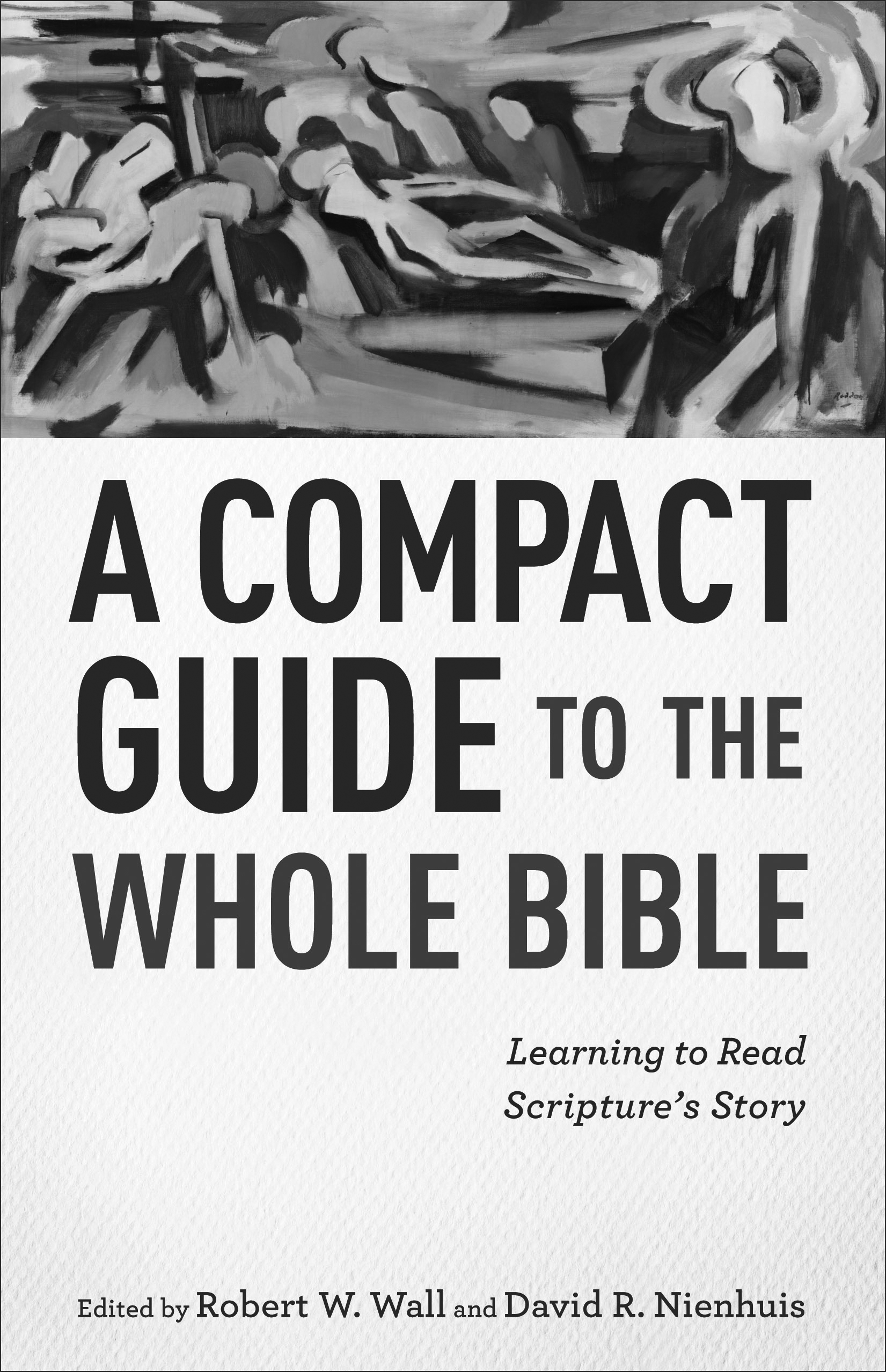Wall, Robert W. and David R. Nienhuis, eds. A Compact Guide to the Whole Bible: Learning to Read Scripture’s Story. Grand Rapids: Baker Academic, 2015.
This book was written by a number of members of the faculty at Seattle Pacific University who were unsuccessful in their search for a short and readable textbook that would introduce the Bible in a way that would be accessible to everyone and not just those with specialized training in ancient languages and cultures. While acknowledging the value of more scholarly studies that explored issues of language, culture, literary styles, and historical context more deeply, they felt that for the general reader, such studies provided too much detail and threatened to detract from the big picture of the biblical story and from the essential character of the Bible as scripture, a sacred text that shapes the life of the church.
The book is organized in a way that reflects that concern. It begins with a chapter on “Reading the Bible as Scripture.” Here, the core convictions reflected in the book are set out. The scripture, say the authors, is a “sacred text, appointed by God to do holy work” (12). That conviction is relevant for all readers. Even the skeptic, who does not see the religious significance of the Bible, should approach it with “a deep respect for its importance for a particular religious community or in shaping Western civilization” (13). The work of interpretation of the scripture is “an act of worship, requiring prayer and spiritual maturity that helps us adapt biblical teaching to daily life” (15).
A number of other shaping concepts flow from these convictions. Some examples: The Bible is a unity, dealing with God’s desire to heal the world so that it “lives, flourishes, and thrives alongside and in the presence of God” (16). The Bible is holy, not because it is flawless, but because of the Spirit’s decision to select these texts to guide the church (17). The influence of the Bible extends to every culture in every age (17). The Bible, properly read, will always point its readers to the risen, living Jesus (18). The Bible should be read both literally and figuratively (21). And finally, the Bible can only be read faithfully in the Spirit and in the church (25).
The first chapter is followed by a chapter that briefly summarizes the way each of the sections of the Bible contribute in unique ways to the unified, overarching story that it tells, or its “metanarrative,” to use the word used in the book. The metanarrative with which the authors work could be summed up in the classic creation, fall, redemption, and restoration frame that will be familiar to many educators in Christian schools.
One of the book’s strengths is the way the author cautions against the possible misuse of the concept of metanarratives, which, he acknowledges, are reductionistic and contextual and are therefore contestable. In other words, while we cannot do without metanarratives, we must remember that the metanarrative that we choose does not tell the whole story, and may indeed keep us from engaging with the whole story.
Gary VanArragon is the editor of the Christian Educators Journal.
